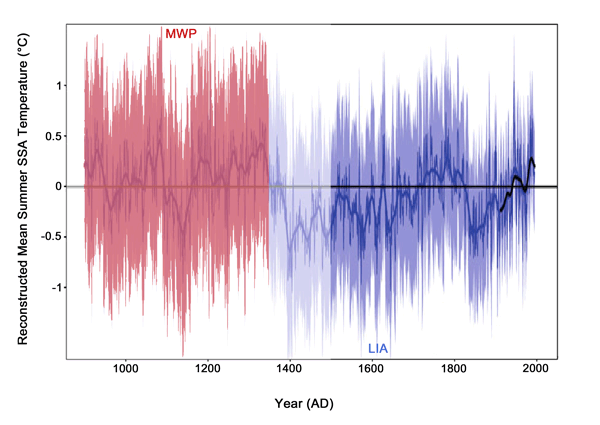Reference
Neukom, R., Luterbacher, J., Villalba, R., Kuttel, M., Frank, D., Jones, P.D., Grosjean, M., Wanner, H., Aravena, J.-C., Black, D.E., Christie, D.A., D'Arrigo, R., Lara, A., Morales, M., Soliz-Gamboa, C., Srur, A., Urritia, R. and von Gunten, L. 2011. Multiproxy summer and winter surface air temperature field reconstructions for southern South America covering the past centuries. Climate Dynamics 37: 35-51.
Description
Working with 22 climate proxies, Neukom et al. developed a mean austral summer (December-February) temperature history for the period AD 900-1995 for the terrestrial area of the planet located between 20°S and 55°S and between 30°W and 80°W, a region they refer to as Southern South America (SSA). This record indicates that "a warm period extended in SSA from 900 (or even earlier) to the mid-fourteenth century," which they describe as being temporally located "towards the end of the Medieval Climate Anomaly as concluded from Northern Hemisphere temperature reconstructions." And as can be seen from the figure below, the warmest decade of this Medieval Warm Period was calculated by them to be AD 1079-1088, which as best we can determine from their graph is about 0.17°C warmer than the peak warmth of the Current Warm Period. MWP: AD 900-1350.

Figure 1. Reconstructed mean summer SSA temperatures. Adapted from Neukom et al. (2011).




